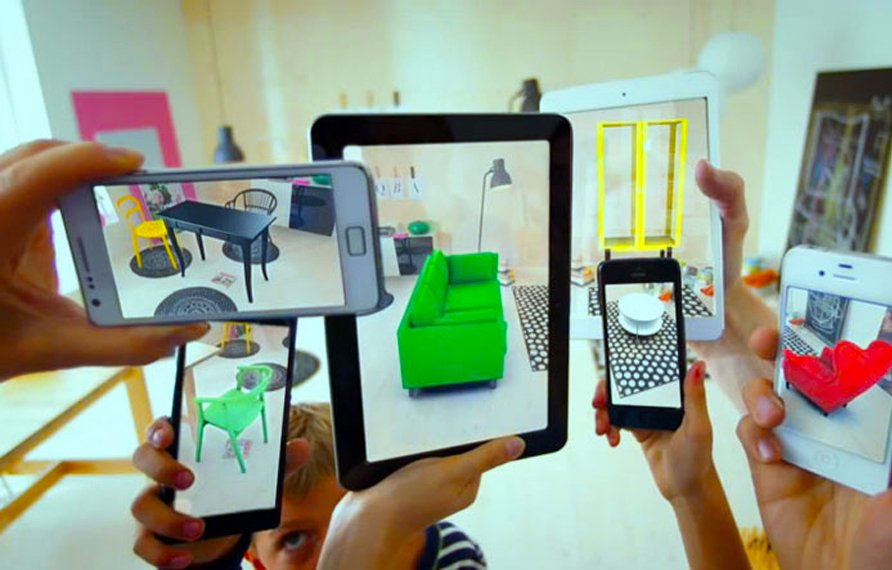This is Part 3 of the IntelligentHQ Guide to Augmented Reality.
In Parts 1 and 2 of our Little Guide to Augmented Reality series we have gained an understanding of the history of augmented reality. We have also seen how augmented reality can already be a part of our lives through the use of Google Cardboard, and how other technological developments are advancing very quickly to allow us to enjoy all that augmented reality potentially has to offer to us. But what of augmented reality in the workplace? Will there be benefits there too? This is the subject for Part 3 of our augmented reality guide.
Lately, many have been gaining renewed interest on augmented reality, arguing that it has considerable potential for businesses. From the Facebook acquisition of Oculus Rift and Google’s investment in Magic Leap to the Samsung GearVR announcement, Google Ingress and Google Cardboard, the industry has suddenly woken up for the great possibilities of AR particularly in terms of Marketing.
On a recent report published by Gartner, it is explained that while the technology is still very new, there is the potential to use it for benefiting and enhancing business processes and workflows, as well as to significantly improve employee training. It will also be possible to use augmented reality for enhanced prototyping and to be able to better visualise outcomes. Other possible uses for augmented reality in the workplace include the ability to help a person make a repair in a difficult environment where visibility is low, indicating distance, size or danger, detecting and highlighting objects that display certain characteristics and showing objects that are giving off heat.
Current augmented reality developments utilise device sensors. These are used for the purpose of identifying the surroundings that the user is in. There are then two types of augmented reality. One is location based and the other is computer vision. Location based augmented reality devices use the motion sensors of that device to offer information about where a user is located. Meanwhile, computer vision focused services are based on the use of tracking algorithms that use facial, object and motion to identify objects and images. An example of this might be identifying one object for what it is compared to another on a table.
Location Services and Image Recognition
As location services and image recognition have increased, so too it is believed, augmented reality business potential has improved. In particular, Gartner believes that the exacting ability of indoor location services provides the opportunity for businesses to exploit augmented reality opportunities in location features for in-building navigation and identification, as well as vehicle and campus. The company VisualCommerce™ for example, uses AR to make entire 3D product inventories accessible and configurable within real-world environments. VisualCommerce™ enables shoppers to visualize the location of their products, when considering a purchase.
Another example is IKEA Augmented Reality App.
Image recognition is used in tasks where users need to identify objects and parts, and it can help with real time decision making. One excellent example that is provided is the case of fire fighters who could use augmented reality for the purpose of discovering ambient temperature, or even building layout, so that they can see where exits and dangerous areas are. This is just one example of the incredible potential that is available with the use of augmented reality in business. There are also many opportunities for improving business processes, optimising the way that certain technologies are currently used, and facilitating this, and improving the processes of business innovation.
Augmented Reality and Efficiency
So far, there have only been very limited uses of augmented reality in organisations. Such uses have generally been created internally, and have used hardware and software that the organisation itself has developed, cusvs purposes, and smartphones and tablets may drive this use. It is also considered to be possible that head mounted displays will become less expensive and more convenient, portable and consequently usable. This is expected to further drive the increased use of augmented reality applications in organisations.
It is thought that particularly helpful applications of augmented reality in business are those where workers may be away from the office and do not have instant access to certain kinds of information. Alternatively it could be useful where employees need the use of both their hands to carry out a task. Either way, the greatest benefits are thought to be likely in the area of efficiency. It is believed that augmented reality tools will be likely to drive productivity up, simplify the processes that business use, offer real time access to data, offer hands on experience and allow greater visualisation and collaboration. While there are still risks with augmented reality at the current time, it is likely that these will decrease over the coming years as the technology strengthens. Look out for augmented reality in your workplace soon!
Additional resource: A day in the office of Magic Leap, the “cinematic reality” startup.
Little Guide to Augmented Reality Part 1
Little Guide to Augmented Reality Part 2

Paula Newton is a business writer, editor and management consultant with extensive experience writing and consulting for both start-ups and long established companies. She has ten years management and leadership experience gained at BSkyB in London and Viva Travel Guides in Quito, Ecuador, giving her a depth of insight into innovation in international business. With an MBA from the University of Hull and many years of experience running her own business consultancy, Paula’s background allows her to connect with a diverse range of clients, including cutting edge technology and web-based start-ups but also multinationals in need of assistance. Paula has played a defining role in shaping organizational strategy for a wide range of different organizations, including for-profit, NGOs and charities. Paula has also served on the Board of Directors for the South American Explorers Club in Quito, Ecuador.










